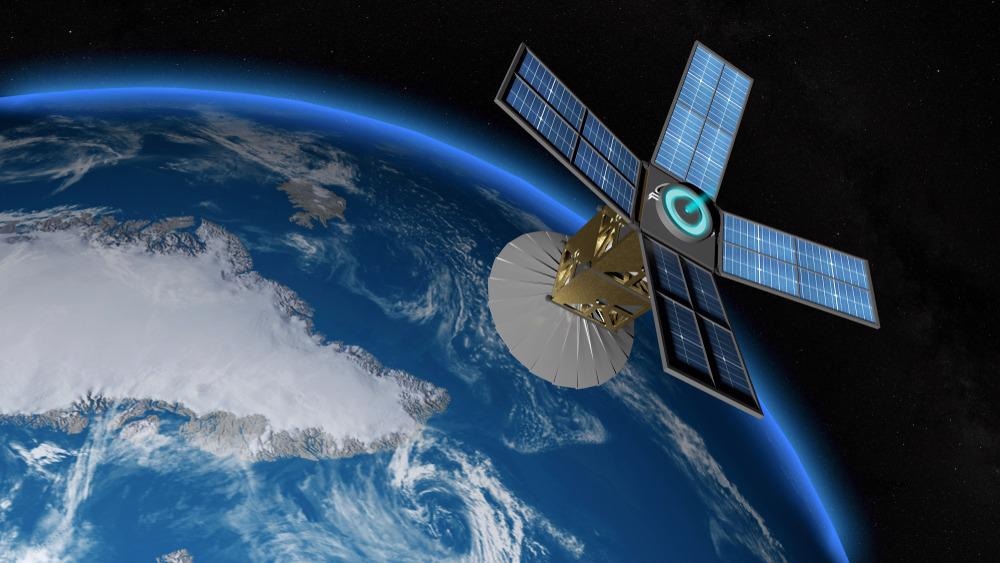The fields of space exploration, research, and commercialization have undergone something of a revolution in recent decades. Once the domain of superpowers’ space agencies only, space has now opened up to universities, businesses, and small-scale space agency projects alike – all thanks to the development of nanosatellites like CubeSat.

Image Credit: FoxPictures/Shutterstock.com
“Small Satellite Mission Philosophy”
From the late 1990s, researchers and engineers working in the space sector began to develop a design-to-cost approach-led intervention in how space exploration and commercialization could operate.
The “small satellite mission philosophy” that came out of this development describes new missions with strict cost and schedule constraints but positively responds to these constraints. A single mission objective, for example, reduces complexity in satellite missions.
The key to this new approach was the advent of small-scale satellites. Now, satellites are defined according to standardized sizes: picosatellites weigh up to 1 kg; nanosatellites weigh between 1 kg and 10 kg; microsatellites weigh between 10 kg and 100 kg; mini-satellites weigh between 100 kg and 1,000 kg.
Nanosatellites in Space
The revolution in space exploration has primarily been driven by a significant increase in the number of missions carried out by nanosatellites (between 1 kg and 10 kg). For instance, 64 countries have launched a total of 1,186 nanosatellites to date.
Most of these nanosatellites were launched from the International Space Station at the height of around 400 km above the Earth’s surface, with an inclination of 51.6°. The rest were released at low Earth orbit (LEO) around 500 km above Earth with inclinations of 97.5°, or at sun-synchronous orbit (SSO) 580 km above Earth with inclinations of 97.8°. Two nanosatellites (MarCO-1 and MarCO-2) have been deployed on interplanetary missions.
CubeSat Standard Dominates
Part of the reason for the proliferation of nanosatellite missions in recent years was the definition and later standardization of a nanosatellite design, CubeSat, in 1999. Of the 1,186 nanosatellites launched to date, 1,088 have been CubeSats.
The CubeSat standard was devised by Professors Jordi Puig-Suari and Bob Twiggs from California Polytechnic State University (CalPoly) and Stanford University. They wanted to design a spacecraft that graduate students could use to implement experiments in space in a reasonable amount of time to finish their studies.
The standard defines satellites as only 10 cm b x 10 cm x 11.35 cm in size and weighing under 1.33 kg. These small boxes can contain all of the primary systems that large satellites use, but they can be made with commercial over-the-shelf (COMS) hardware.
The CubeSat design was never intended to be a “standard,” exactly. It simply defines the mechanical external interfaces of the satellite. Due to its simplicity, the design was very popular. Eventually, CubeSat became widely adopted as a de facto standard.
What Are Nanosatellites’ Applications?
The first generation of CubeSat nanosatellites launched between 1999 and 2013 was predominantly released by universities and research institutes. Earth observation (EO) researchers used them to conduct smaller missions with a single target, reducing the costs of launching a mission by sharing rocket rides.
With nanosatellites, EO scientists have launched massive constellations of over 100 nanosatellites to collect data that is helping us better understand our planet. This data has been instrumental in climate and environmental research in the last few decades.
In 2013, Planet Labs and Spire Global launched the first commercial CubeSat missions. Since then, commercial missions have seen the greatest use of the CubeSat standard. Planet Labs has launched the largest commercial CubeSat constellation to date with 355 satellites, while Spire Global is in second place with just over 110 satellites in one constellation.
Satellites communications companies plan to deploy similarly expansive constellations of satellites into LEO, providing worldwide high-speed Internet that can power next-generation Internet-of-Things (IoT) systems.
Nanosatellites Still Have Limitations
Despite their innovations, nanosatellites still possess limitations, and bigger and even smaller satellites will continue to be used for different applications.
For example, it is hard to fit solar panels to their small frames, so extra electrical power is not always possible. Including antenna reflectors large enough to establish an acceptable space-to-Earth link is challenging for the same reason.
Inaccurate pointing ability was also a difficulty for CubeSat users, although this has recently been overcome with the introduction of miniaturized start trackers and reaction wheels.
Due to the energy and connection issues that come from nanosatellites’ small size, LIDAR and RADAR sensors have not made their way on board in any missions. However, synthetic aperture radar (SAR) has been successfully used in microsatellites (10 kg to 100 kg).
Nanosatellites like the CubeSat will continue to proliferate, especially as communications companies make the switch from larger satellite designs in the coming years. Standard design will also continue to develop, with NASA taking a firm hand in driving the CubeSat forward into the next phase of space technology
References and Further Reading
Camps, A. (2019) Nanosatellites and Applications to Commercial and Scientific Missions. Satellites Missions and Technologies for Geosciences. Available at: https://doi.org/10.5772/intechopen.90039
Nanosats Database. (2021) Nanosats Database. [online] Available at: https://www.nanosats.eu/
Disclaimer: The views expressed here are those of the author expressed in their private capacity and do not necessarily represent the views of AZoM.com Limited T/A AZoNetwork the owner and operator of this website. This disclaimer forms part of the Terms and conditions of use of this website.